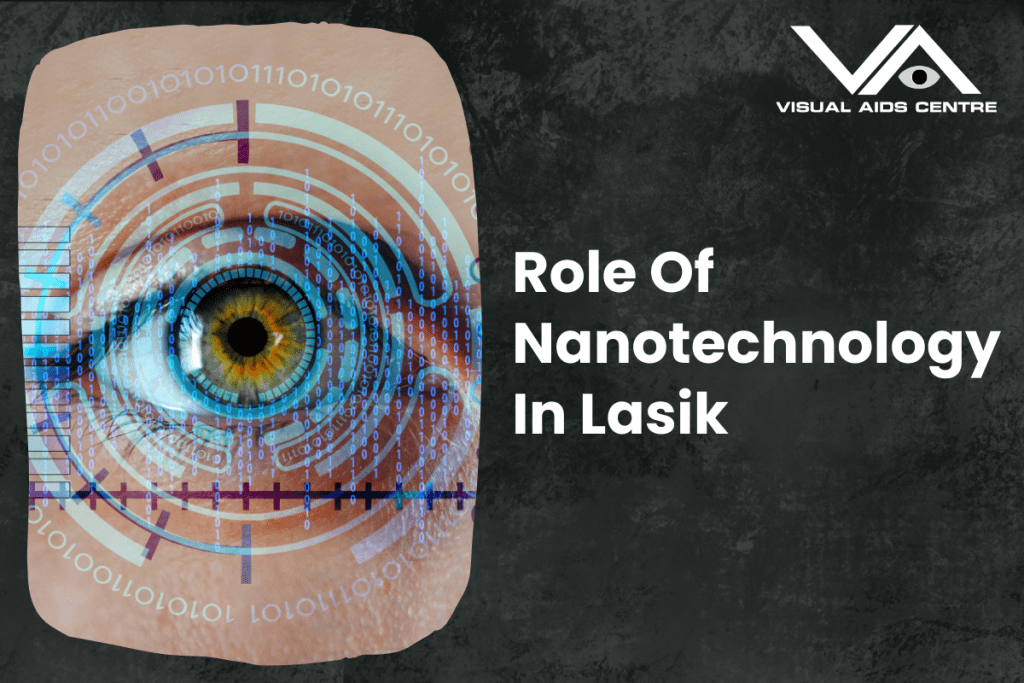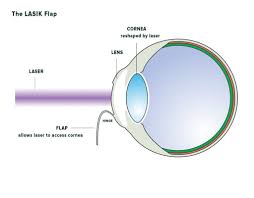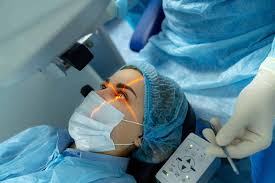Table of Contents
ToggleNanotechnology has transformed various fields, and its impact on LASIK (Laser-Assisted in situ Keratomileusis) is no exception. By integrating nanotechnology into this eye surgery, precision, safety, and patient outcomes have been significantly enhanced.

Understanding LASIK and Its Limitations
LASIK is a popular refractive surgery used to correct vision problems such as myopia, hyperopia, and astigmatism. By reshaping the cornea with a laser, it aims to improve light refraction onto the retina. However, traditional LASIK techniques face certain limitations, including the risks of post-operative complications, imprecise corneal ablation in some cases, and patient dissatisfaction due to under- or over-correction. This is where nanotechnology plays a pivotal role in enhancing the precision and effectiveness of LASIK procedures.
What Is Nanotechnology?
Nanotechnology revolves around the manipulation of materials at a molecular or atomic level, generally within a range of 1 to 100 nanometers. The nanometer scale allows for unprecedented accuracy, which proves highly beneficial in fields like medicine and optometry. The application of nanotechnology in LASIK aims to address traditional limitations and improve the efficacy of the surgery.
How Nanotechnology Enhances LASIK Precision?
1. Nano-lasers for Ultra-precise Corneal Ablation
Nano-lasers operate on an ultra-precise level, allowing for incredibly accurate corneal ablation during LASIK procedures. Unlike conventional femtosecond or excimer lasers, nano-lasers utilise nanosecond pulses, which help achieve greater precision with minimal collateral damage to surrounding tissues.
- Reduced Heat Effects
One key advantage of nano-lasers is their reduced thermal effects on the corneal surface, which typically minimises post-operative inflammation or scarring.
- Improved Treatment of Irregular Corneas
Irregular or thin corneas previously deemed unsuitable for LASIK may now be treated safely using advanced nano-laser mechanisms.
2. Nanoparticles for Enhanced Corneal Healing
Nanotechnology also plays a role post-surgery. Nanoparticles, for example, are being used to promote faster healing in the cornea after LASIK.
- Delivery of Anti-inflammatory Agents
Nanoparticles act as carriers for drugs like anti-inflammatory agents, delivering them directly to the site of healing for targeted therapy. This minimises systemic exposure and enhances treatment effectiveness.
- Improved Wound Recovery
By supporting the regeneration of corneal epithelial cells, nanoparticles contribute to shorter recovery times and better visual outcomes.
Role in Minimising Side Effects
3. Reducing Halos and Glare with Nano-structured Lenses
Patients often report visual disturbances such as halos, glare, or starbursts after LASIK surgery, particularly in low-light conditions.
- Optimising Corneal Topography
Nano-engineered tools can achieve better corneal shape modifications, helping to mitigate such optical aberrations.
- Smart Nano-coatings
Nano-coatings applied to contact lenses or intraocular lenses can enhance light transmission and reduce unwanted reflections, resulting in improved night vision for patients.
4. Prevention of Dry Eye Syndrome
Temporary dry eye is a common side effect of LASIK due to corneal nerve disruption.
- Nanotechnology to Restore Corneal Nerves
Nanoscale therapeutic agents, such as nerve-regeneration promoters, can support the recovery of corneal nerve endings. This reduces the occurrence of dry eye and shortens discomfort for the patient.
- Nanomicellar Eye Drops
These innovative eye drops are designed to maintain tear film stability, further preventing this common LASIK side effect.
Advancing Patient Outcomes
5. Real-time Monitoring with Nano-sensors
The integration of nano-sensors during LASIK procedures allows for real-time feedback and monitoring. This greatly enhances both surgical precision and patient safety.
- Real-time Feedback for Surgeons
Nano-sensors collect critical data about corneal thickness and ablation depths, enabling surgeons to make informed adjustments during surgery.
- Minimising Human Error
By eliminating the guesswork, nano-sensors reduce the likelihood of iatrogenic complications and improve surgical accuracy.
6. Individualised Treatments via Nano-imaging
Nanotechnology also contributes to pre-operative assessment through state-of-the-art nano-imaging techniques.
- Improved Corneal Mapping
Using nanoscale imaging, ophthalmologists can create detailed corneal maps customised to each patient. This ensures that treatments are tailored to individual needs.
- Detection of Subtle Irregularities
Nano-imaging techniques can identify subtle corneal irregularities that traditional tools might overlook, resulting in better surgical outcomes.
The Role of Nanotechnology in Safety
3. Minimising Risk of Infection
Nanotechnology enhances sterility and reduces the risk of infection associated with LASIK procedures.
- Antimicrobial Nano-coatings
Surgical instruments with antimicrobial nano-coatings prevent bacterial growth, reducing infection risks for patients.
- Nano-drug Delivery
Antibiotic drugs delivered via nanoparticles ensure targeted and effective treatment for preventing post-operative infections.
8. Long-lasting Results with Improved Materials
The durability of LASIK results often depends on factors like corneal stability and the quality of reshaping.
- Nano-engineered Polymers
These help improve the longevity of results by enhancing the structural integrity of corneal tissues.
- Better Biocompatibility
Nanotechnology contributes to creating biocompatible materials that seamlessly integrate with the body, further reducing the risk of complications or regression.
Future Prospects of Nanotechnology in LASIK
While nanotechnology has already revolutionised key aspects of LASIK surgery, research continues to unlock even more possibilities.
- Personalised Medicine
Future advancements could see nanotechnology enabling highly personalised LASIK options based on genetic or environmental factors unique to every patient.
- Hybrid Approaches
Integration of nanotechnology with AI and machine learning could provide surgeons with predictive analytics, making surgeries safer and more efficient.
- Self-healing Corneal Tissues
Research is underway to develop nano-enabled self-healing corneal tissues, which could eliminate some of the risks currently associated with LASIK surgeries.
Revolutionising LASIK with Nanotechnology
Nanotechnology’s role in LASIK has elevated this procedure to a level previously considered impossible. From nano-lasers offering unmatched precision to nano-sensors ensuring real-time accuracy, nanotechnology has redefined patient safety, outcomes, and satisfaction. By addressing both pre-operative challenges and post-operative recovery, these scientific advancements have achieved widespread success.
LASIK surgeons and researchers alike are advised to stay updated on these exciting developments to adopt the very best technology for patient care.













